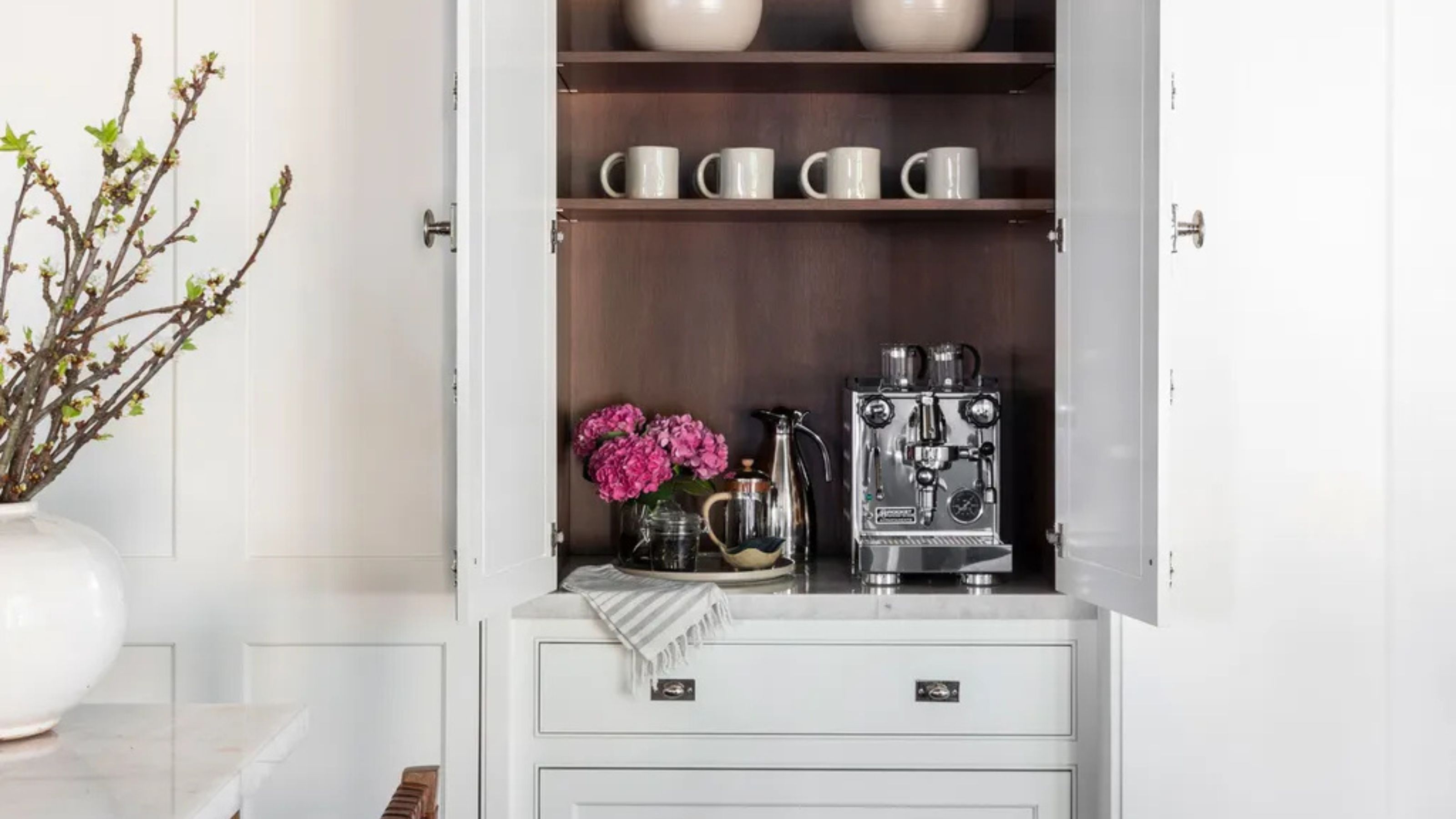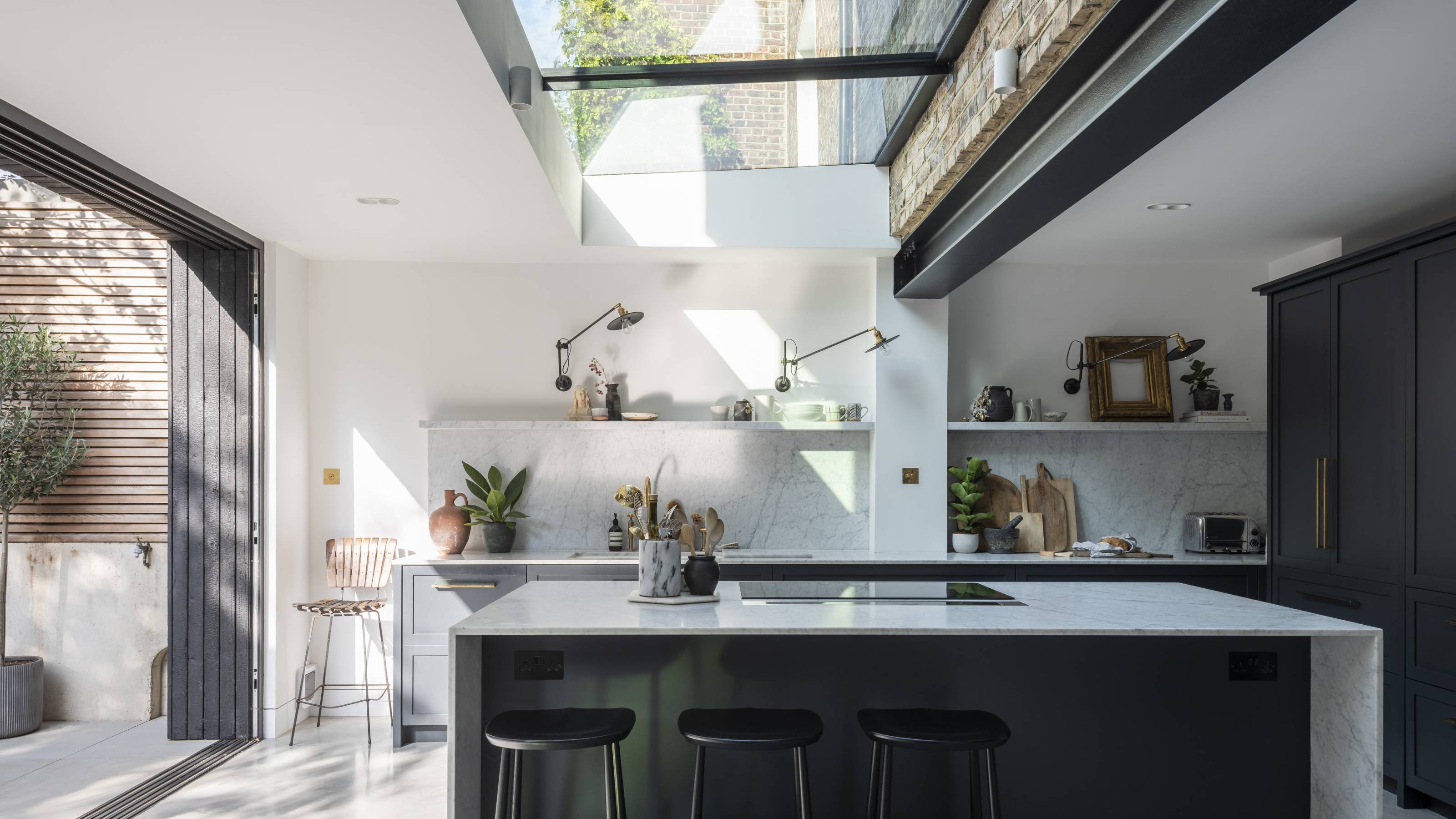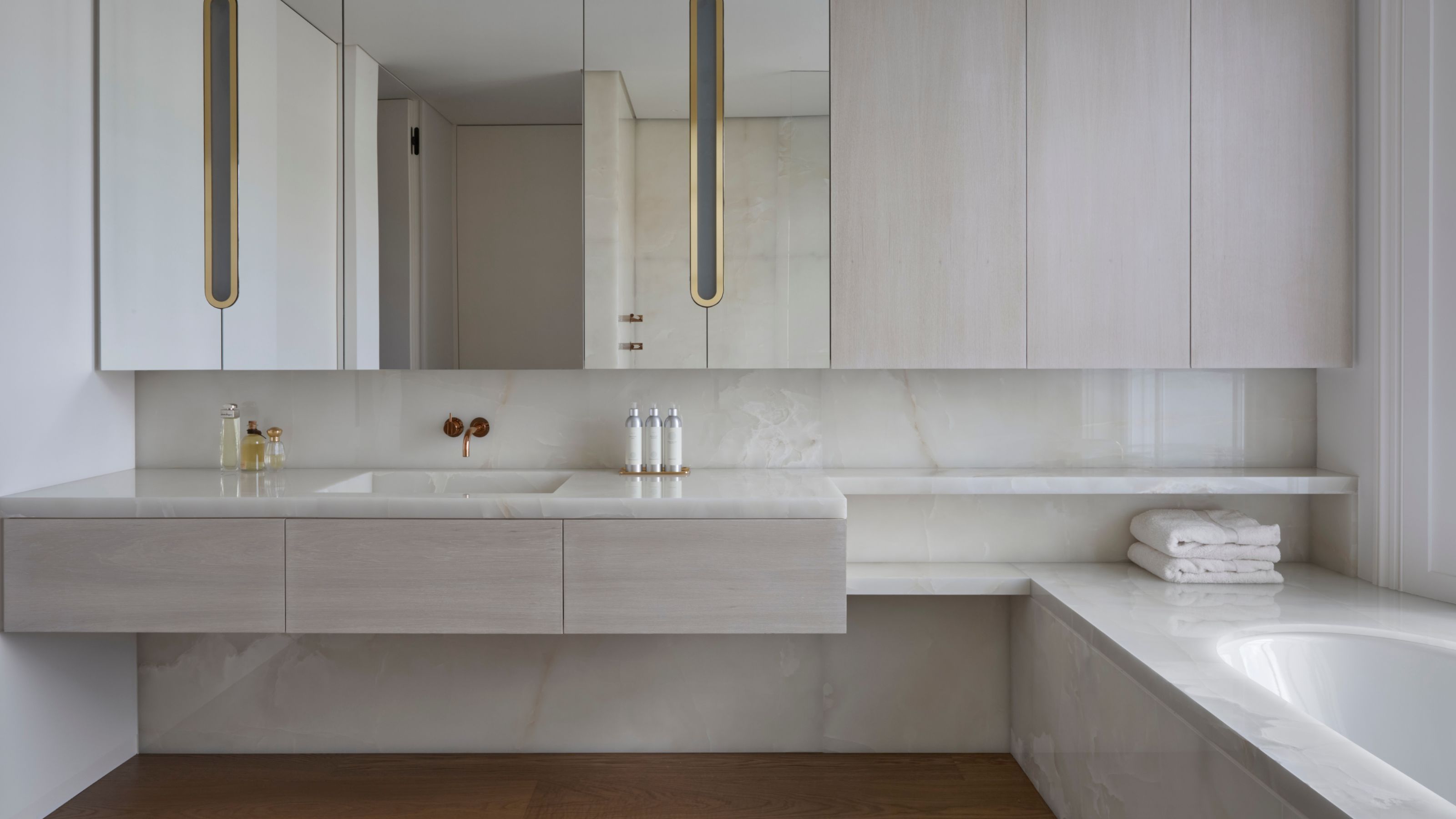When to Drip Faucets — Because Burst Pipes Are Not a Design Statement
A plumbing expert tells us all about how timing can impact the overall health of your home and its piping


Now, it may not be all glitz and glamor, but it's a question that is vital to your home's aesthetic: when should you start dripping a faucet to prevent frozen and burst pipes that can wreak havoc on your decor?
Whether you're dripping your kitchen faucet or one in your backyard, this form of winterizing your home needs to be done correctly and at the right time.
I asked a plumbing expert when to start, and he told me that it's vital to start just before a big freeze hits. Below, is everything you need to know in full, mistakes to avoid, and when to stop dripping your pipes and faucets.
When to Drip a Faucet

Danny Pen, an expert plumber and president of New Era Plumbing & HVAC, tells me that you should drip your faucets before the winter frost hits.
"The best time to drain faucets is before freezing temperatures hit, especially if you’re preparing outdoor faucets," he explains. "Draining removes residual water, which could expand and crack pipes. Ideally, do this after your last lawn care or outdoor cleaning session in fall, before the first frost warning in your area." For added protection on your pipes, you can also use a Pipe Wrap Insulation, like this one from Amazon.
Danny continues: "Plus, draining outdoor faucets after any water-heavy outdoor activity, like power washing, will avoid trapped water causing unseen damage."
As for inside the house, the expert says you should consider draining faucets during plumbing repairs, as this will help "prevent water spurts or sediment buildup when turning water back on."
As for when you should leave faucets dripping, Danny says whenever temperatures drop below 32°F, particularly overnight. "If you’re away, set your thermostat to at least 55°F and consider dripping faucets in unheated areas to prevent freezing," he adds.
What Is the Most Common Faucet Dripping Mistake?

Danny says, "A common mistake is dripping the faucet too lightly or too heavily. A small, steady stream is more effective than a faint drip because it helps maintain consistent pressure, preventing freezing in colder areas of your plumbing."
Another mistake that Danny points out is only dripping hot water when both hot and cold lines should be protected. "But surprisingly, the biggest mistake isn’t just about how much you drip — it’s forgetting the location," says Danny. "Many people only drip the sink closest to the cold air source — like an exterior wall — ignoring internal faucets connected to the same vulnerable pipe. It’s also a mistake to assume dripping eliminates all risk; insulating pipes is equally crucial."

Danny Pen boasts over 12 years of experience in plumbing, heating, and cooling. He currently leads New Era Plumbing & HVAC, a local company specializing in inspection, repair, and replacement services. His company's mission is to deliver superior service to the communities they work within while providing the highest quality plumbing, HVAC, and drain services.
How Many Faucets Should I Drip?

Danny says this depends entirely on your home's pipe layout. "Drip faucets in areas most vulnerable to freezing, such as those on exterior walls, in unheated spaces, or farthest from the main water supply," explains Danny. "The number depends on your home’s pipe layout. In single-zone systems, dripping one faucet might suffice, but in homes with multiple zones or long pipe runs, it’s better to drip faucets at the farthest point of each zone."
Danny says you should use the following rule when dripping faucets, "drip faucets at the highest risk of freezing and the ones most inconvenient to repair in case of a freeze."
FAQs
When can I stop dripping my faucets?
The best time to stop dripping your faucets is "once temperatures consistently remain above freezing during the day and night," Danny tells us.
In areas with fluctuating temperatures, Danny says you should "continue dripping until you’re certain the weather has stabilized, check crawl spaces, basements, and cabinet doors — if these areas are still cold, dripping should continue even in slightly warmer conditions to avoid localized freezing."
Be The First To Know
The Livingetc newsletters are your inside source for what’s shaping interiors now - and what’s next. Discover trend forecasts, smart style ideas, and curated shopping inspiration that brings design to life. Subscribe today and stay ahead of the curve.

Faiza is the Renovation Editor at Livingetc. Faiza is currently renovating her small kitchen in her dainty apartment in London. Faiza previously worked for The Independent as a News Feature Writer, where she crafted lifestyle, entertainment, and news stories. She also worked as an Audience Editor for the newspaper for almost two years. Thriving in the busy newsroom, Faiza also spent her time crafting stories for Sky News as an SEO reporter, where she produced stories based on trending topics. Lifestyle and interior design is a space she has been interested in for quite some time, and as she blossoms in this field, she will continue to further her skills in design and gardening. Faiza has a background in SEO, social media, and reporting. Her passion for writing goes beyond her workm as she loves all things poetry and creative writing.
-
 Turns Out the Coolest New Café is Actually In Your Kitchen — Here's How to Steal the Style of TikTok's Latest Trend
Turns Out the Coolest New Café is Actually In Your Kitchen — Here's How to Steal the Style of TikTok's Latest TrendGoodbye, over-priced lattes. Hello, home-brewed coffee with friends. TikTok's 'Home Cafe' trend brings stylish cafe culture into the comfort of your own home
By Devin Toolen Published
-
 5 Bathroom Layouts That Look Dated in 2025 — Plus the Alternatives Designers Use Instead for a More Contemporary Space
5 Bathroom Layouts That Look Dated in 2025 — Plus the Alternatives Designers Use Instead for a More Contemporary SpaceFor a bathroom that feels in line with the times, avoid these layouts and be more intentional with the placement and positioning of your features and fixtures
By Lilith Hudson Published
-
 The 10 Different Types of Kitchen Taps — And the Pros and Cons of Each One to Know Before You Pick
The 10 Different Types of Kitchen Taps — And the Pros and Cons of Each One to Know Before You PickFrom sleek pull-outs to vintage bridge taps, explore 10 kitchen tap styles that mix function, flair, and a splash of cool
By Linda Clayton Published
-
 How Much Does an Extension Cost in 2025? Renovation and Design Experts Break Down Your Budget
How Much Does an Extension Cost in 2025? Renovation and Design Experts Break Down Your BudgetExplore how much different types of extensions cost in 2025 to budget for your project accurately
By Amy Reeves Published
-
 9 Bathroom Storage Mistakes You're Probably Making That Make Using This Space Much Harder — And What to Do Instead
9 Bathroom Storage Mistakes You're Probably Making That Make Using This Space Much Harder — And What to Do InsteadDiscover which mistakes are to blame for your overcrowded and cluttered bathroom
By Seraphina Kyprios Published
-
 These 'Scenting Droplets' Might Be the Coolest (and Most Stylish) Way to Make Your Home Smell Amazing
These 'Scenting Droplets' Might Be the Coolest (and Most Stylish) Way to Make Your Home Smell AmazingIf you're looking to switch out your incense sticks for something more fun, then you should know about Ripple+'s incense droplets. Let me introduce you.
By Amiya Baratan Published
-
 The Japanese Principle of Iki (粋) Is All About 'Refined Elegance' — Here's How to Embrace It in Your Home
The Japanese Principle of Iki (粋) Is All About 'Refined Elegance' — Here's How to Embrace It in Your HomeIf your interior vibe is all about refined elegance and opulent minimalism, you need to know about the Japanese principle of 'Iki'. Here's how to bring it home.
By Amiya Baratan Published
-
 What Can I Choose Instead of Brass Taps? 4 Finishes That Are Emerging in 2025's Kitchens and Bathrooms
What Can I Choose Instead of Brass Taps? 4 Finishes That Are Emerging in 2025's Kitchens and BathroomsIf you want to try something a little different for your kitchen or bathroom finishes, these are the trending styles in taps beyond classic brass
By Seraphina Kyprios Published
-
 Kris Jenner’s 'All-Green' Glass Fridge Is My Organization Inspo of the Week — Here Are 5 Smart Storage Takeaways I'll Be Adopting
Kris Jenner’s 'All-Green' Glass Fridge Is My Organization Inspo of the Week — Here Are 5 Smart Storage Takeaways I'll Be AdoptingIf you're looking for fridgescaping inspiration, you might not think to look to Kris. But her all-green fridge says otherwise. Here are five tips we've learnt.
By Amiya Baratan Published
-
 8 Tranquil Water Garden Ideas That Look Beautiful and Train Your Ear Away From Noisy Outdoor Distractions
8 Tranquil Water Garden Ideas That Look Beautiful and Train Your Ear Away From Noisy Outdoor DistractionsIf you enjoy spending time outdoors and are looking for ways to elevate your backyard's ambiance, here are 88 water garden ideas that are sure to inspire.
By Amiya Baratan Published